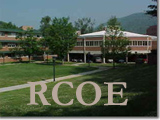|
Copyright 2006
Amanda Burleson, Reich
College of Education, Appalachian |
|||
|
Artifact #1 |
The first artifact is comprised of two
examinations taken in Teaching Beginning Readers and Writers.
Impact: I gained knowledge and strategies about teaching beginning
readers and writers, as well as ways to support struggling readers. As a reading teacher in a school wide
Title I program, I work with students K-8. Dr. Schlagal’s lectures, in class videos, and outside of
class theory based reading, addressed topics that I could apply directly into
my work as a reading teacher.
Most all strategies, I could apply directly to the population with
which I am working or reinforced strategies that I was currently using in my
teaching. Alignment: Standard A: Instructional
Expertise: Responses on both my midterm and
final of Teaching Beginning Readers and Writers, demonstrate my
acquisition of well developed theoretical and philosophically based practices
in educational research.
Concepts that I acquired while taking this class enabled me as a
reading teacher, to take my learning and apply it directly into my
teaching. I had more strategies
and knowledge concerning selection of materials, monitoring student learning
for indications of progress and adjusted my instruction accordingly. Standard B:
Knowledge of Learners
Although Teaching Beginning
Readers and Writers is a class mostly designed to address the needs of
the K-2 reader, many of the reading strategies I implemented into my
teaching, I could use with other members of the population I serve. I implemented many of the research
based reading strategies when providing reading instruction to students who
are English Language Learners and to students in grades 3-8, not just
K-2. Although I utilize some of
the same strategies for all learners, I modify instruction based on
developmental appropriateness as well as foster a supportive environment
where the student feels successful. Standard D: Content Knowledge
My responses on the midterm and final
exam in Teaching Beginning Readers and Writers, demonstrates my depth and
breadth of knowledge and understanding of educational research findings and
trends in education and the ability to apply it directly into my reading
instruction. |
||

